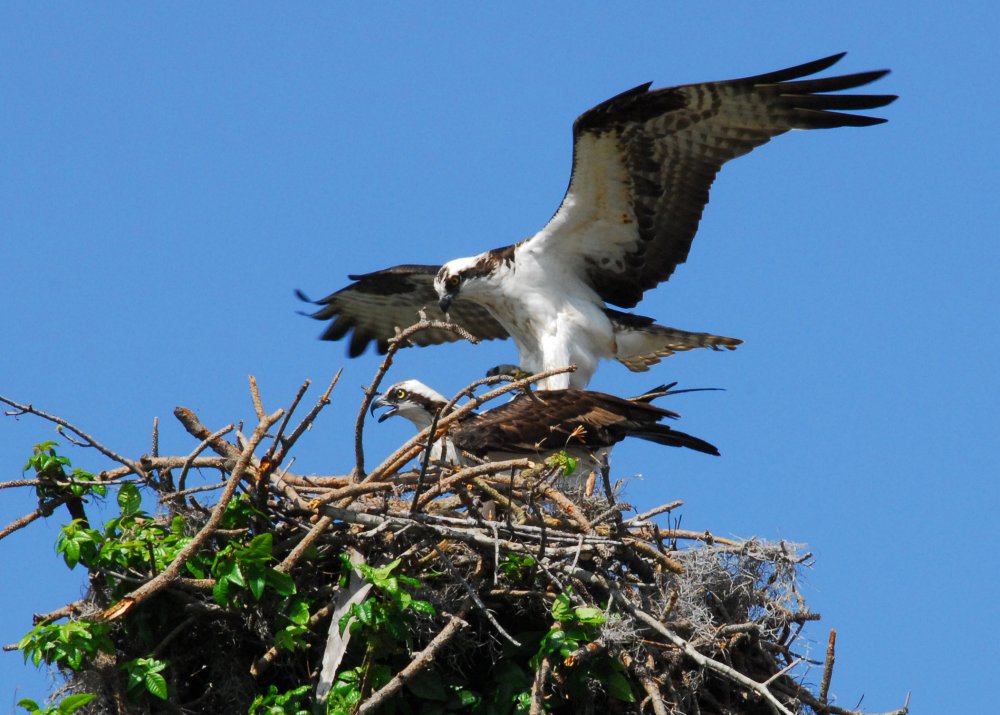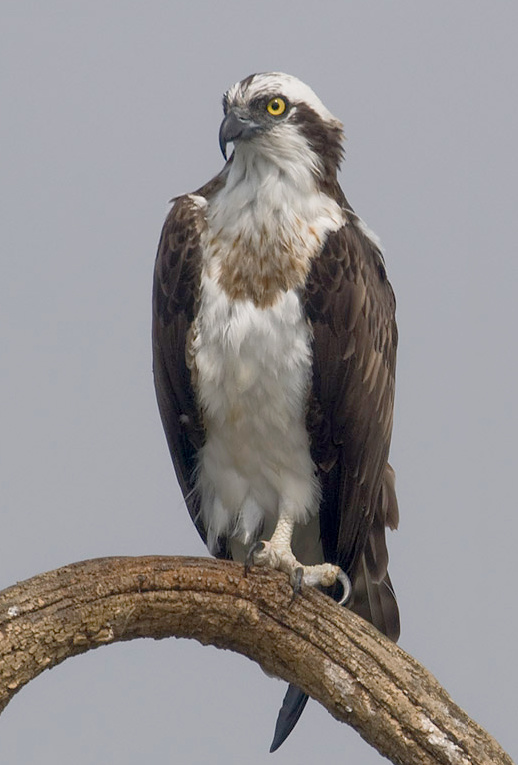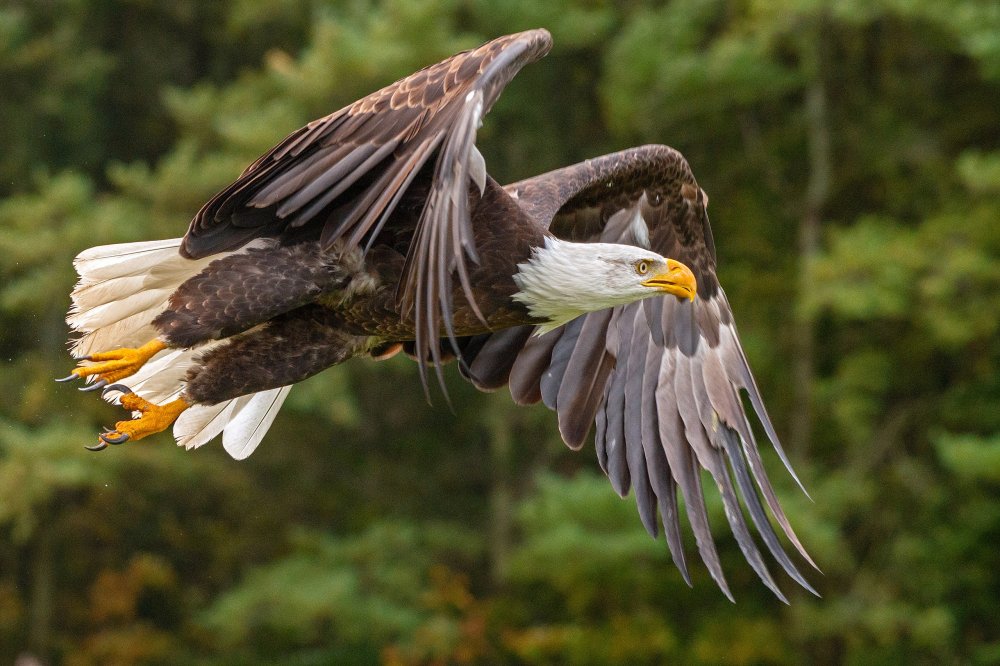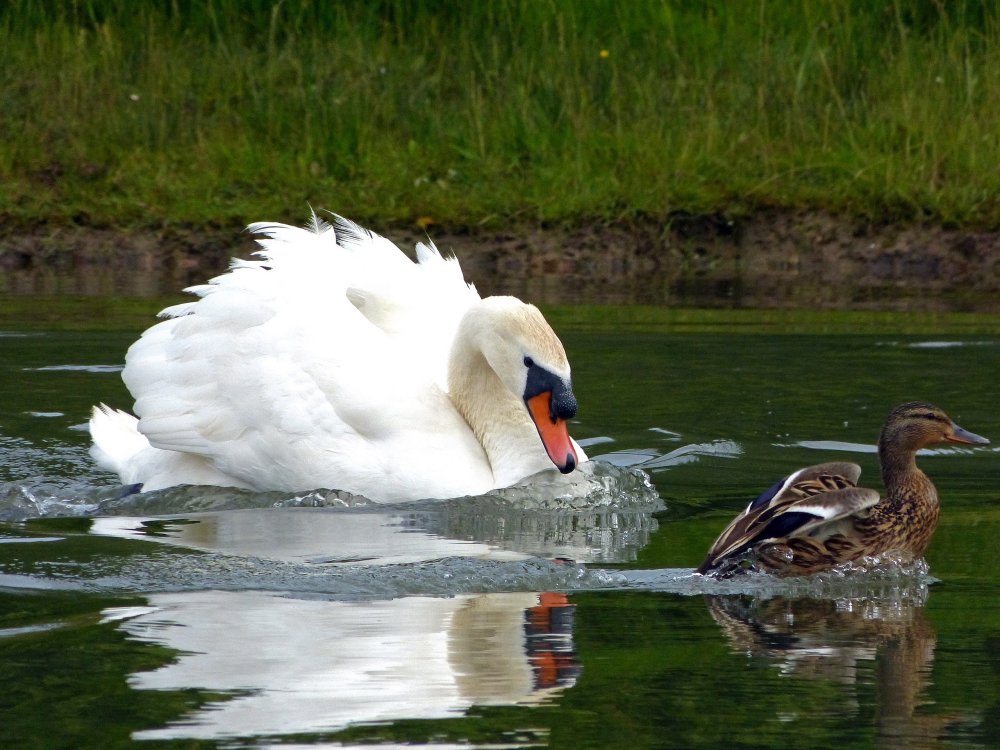Ospreys & Eagles
Osprey

Ospreys, or “Fish Hawks”, are surprisingly common, and can be found just about anywhere. You’ll typically see them flying high over the water from a tree on one side to a tree on the other, occasionally diving down on some unlucky fish. Ospreys are usually seen alone, but mating pairs stay together, and I think young siblings stay together for a while as well. Ospreys are one of the biggest birds that you are likely to see. A single species has an almost worldwide distribution – pretty much everywhere except Australia.
Ospreys are common enough to become bothersome. In 2021, a pair decided to nest in downtown Keyport, and the entire summer’s events were canceled, because they are a protected species. Someone should have climbed up that pole and shushed them away – it’s a dumb place to nest, and they will probably be back next year. Some laws are stupid. There are lots of nice nesting platforms for them right out in the bay.
The Osprey is 2 lb – 4 lb 10 oz in weight and 19-1⁄2″ – 26″ in length with a 50-71″ wingspan. The local subspecies averages 3 lb 12 oz. The wing chord (width) measures 15″ – 20-1⁄2″, the tail measures 6-1⁄2″ to 9-1⁄2″ and the tarsus is 2″ – 2-5⁄8″. Compared to other similar large birds, the Osprey is somewhat larger than a Red-tailed Hawk but smaller than a Turkey Vulture.

The upperparts are a deep, glossy brown, while the breast is white and sometimes streaked with brown, and the underparts are pure white. The head is white with a dark mask across the eyes, reaching to the sides of the neck. The irises of the eyes are golden to brown, and the transparent nictitating membrane is pale blue. The bill is black, with a blue cere, and the feet are white with black talons. A short tail and long, narrow wings with four long, finger-like feathers, and a shorter fifth, give it a very distinctive appearance.
The sexes appear fairly similar, but the adult male can be distinguished from the female by its slimmer body and narrower wings. The breast band of the male is also weaker than that of the female or is non-existent, and the underwing coverts of the male are more uniformly pale. It is straightforward to determine the sex in a breeding pair, but harder with individual birds.
The juvenile Osprey may be identified by buff fringes to the plumage of the upperparts, a buff tone to the underparts, and streaked feathers on the head. During spring, barring on the underwings and flight feathers is a better indicator of a young bird, due to wear on the upper parts.
In-flight, the Osprey has arched wings and drooping “hands”, giving it a gull-like appearance. The call is a series of sharp whistles, described as cheep, cheep, or yewk, yewk. If disturbed by activity near the nest, the call is a frenzied cheereek!
Bald Eagle

Bald Eagles are becoming more and more common in the region. When once it was exceptional to ever see one at all, now I see them regularly, and they seem to be nesting all over the place. The Bald Eagle is similar to the Osprey, but much larger, with an all-white head and neck. If you see something you think is an Osprey, but closer to the size of a Cessna, that is a Bald Eagle.
The Bald Eagle has a body length of 28″-40″. Typical wingspan is between 5 ’11” in and 7’7″ and mass is normally between 6.6 and 13.9 pounds. Females are about 25% larger than males, averaging as much as 12 lb, and against the males’ average weight of 9 lb.

Bald Eagles are not actually bald; the name derives from an older meaning of the word, “white headed”. The adult is mainly brown with a white head and tail. The sexes are identical in plumage, but females are about 25 percent larger than males. The yellow beak is large and hooked. The plumage of the immature is brown.
The call consists of weak staccato, chirping whistles, kleek kik ik ik ik, somewhat similar in cadence to a gull’s call. The calls of young birds tend to be more harsh and shrill than those of adults.
The Bald Eagle is the national bird of the United States of America. In the late 20th century it was on the brink of extirpation in the contiguous United States. Populations have since recovered, and the species was removed from the U.S. government’s list of endangered species on July 12, 1995, and transferred to the list of threatened species. It was removed from the List of Endangered and Threatened Wildlife in the contiguous states on June 28, 2007.
